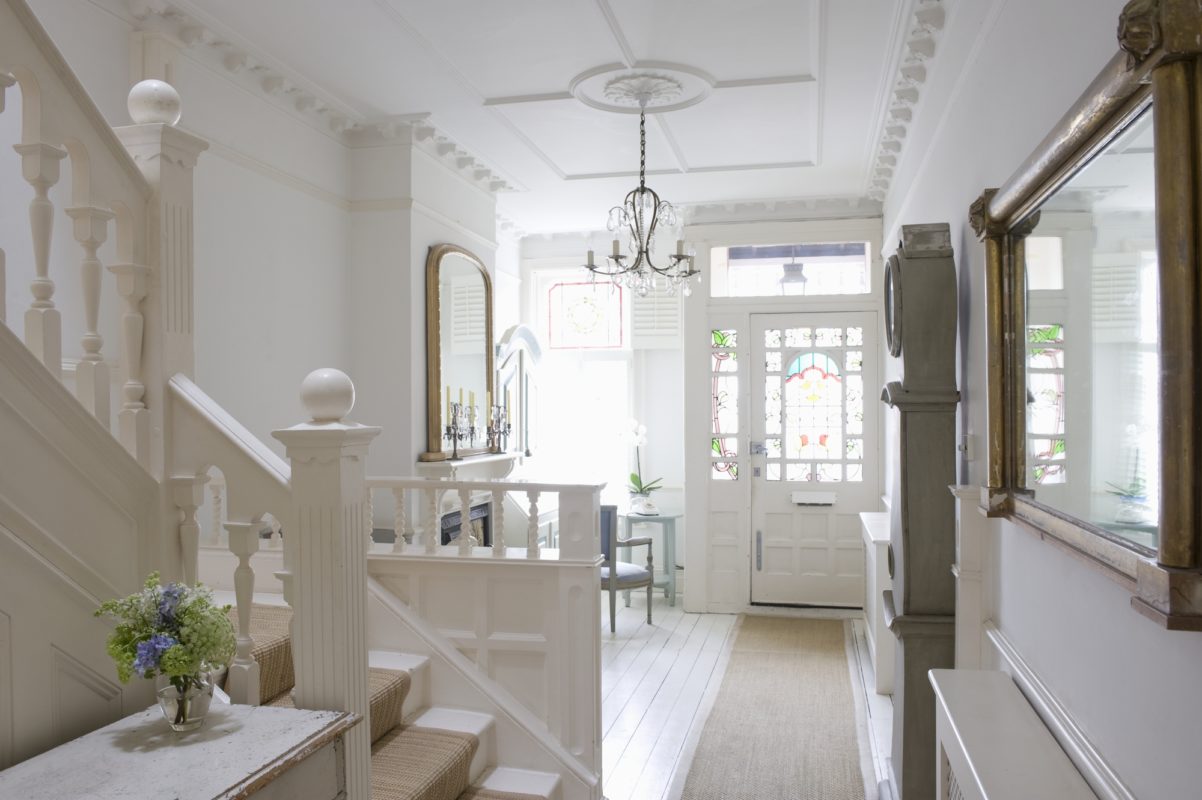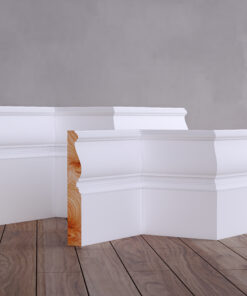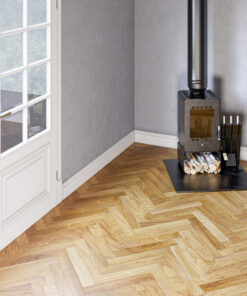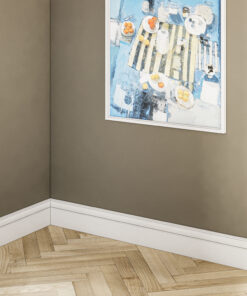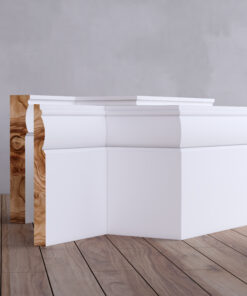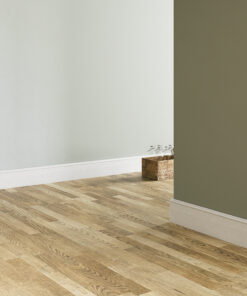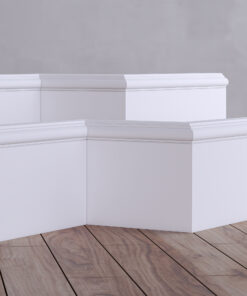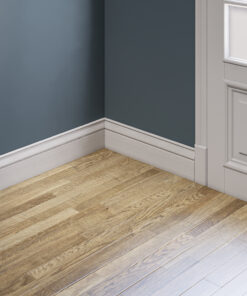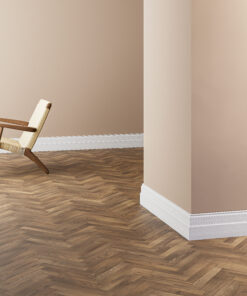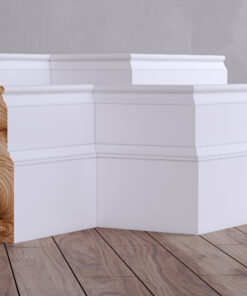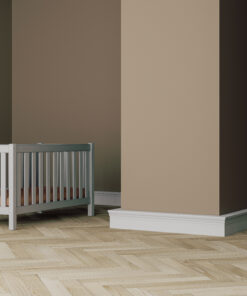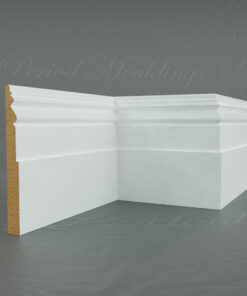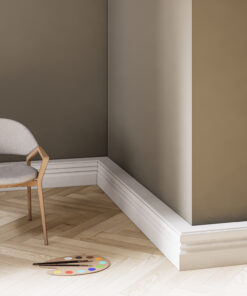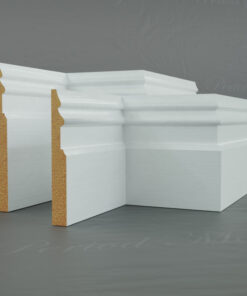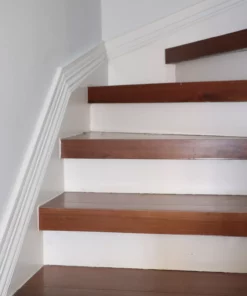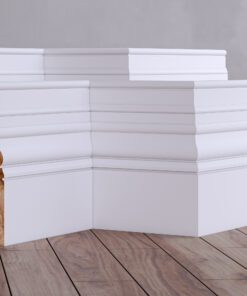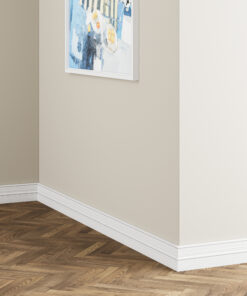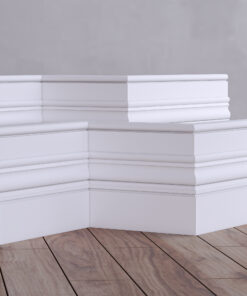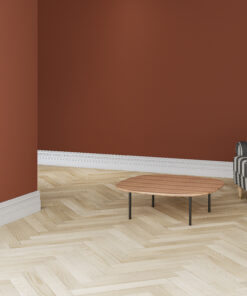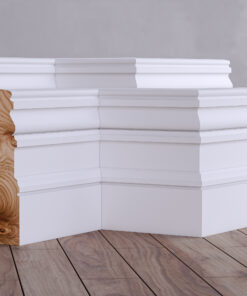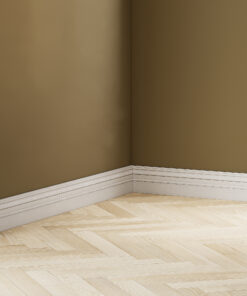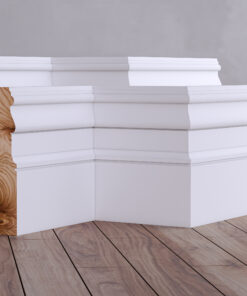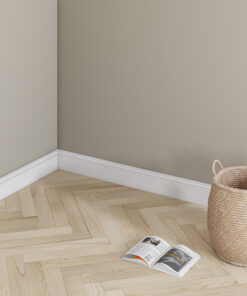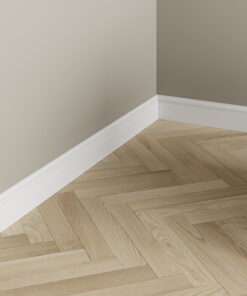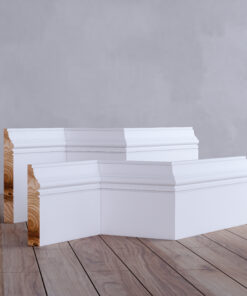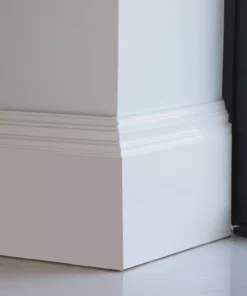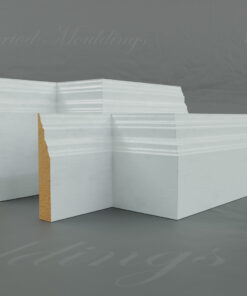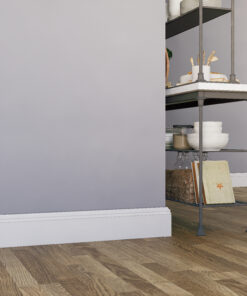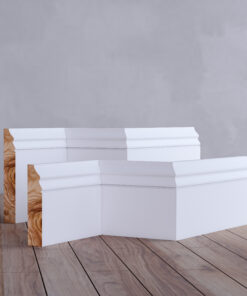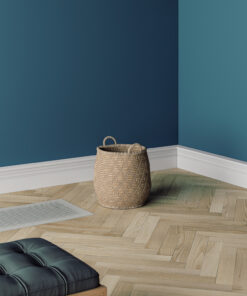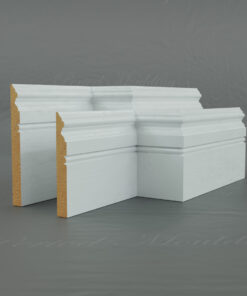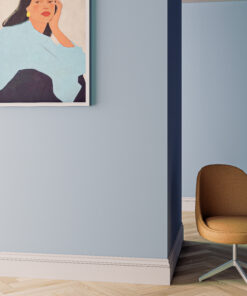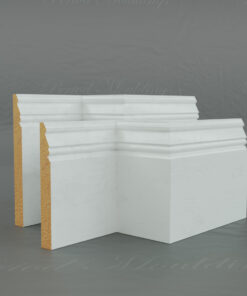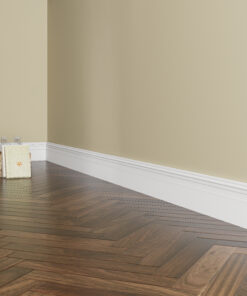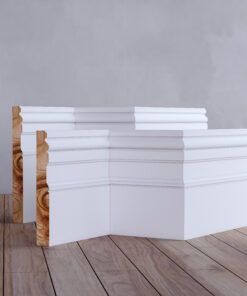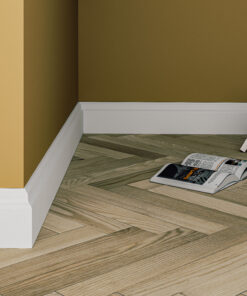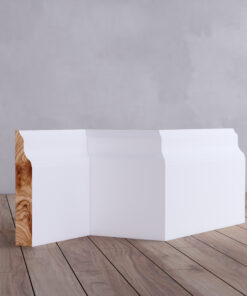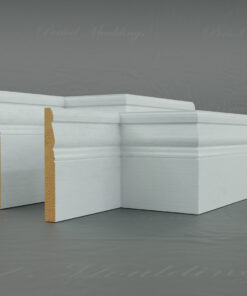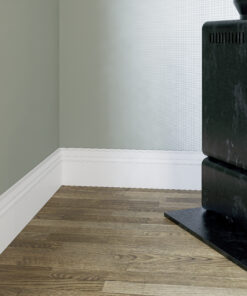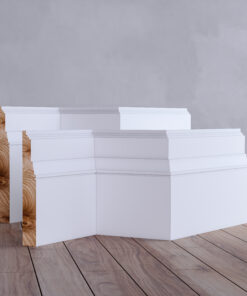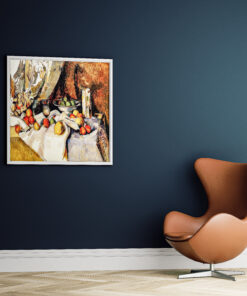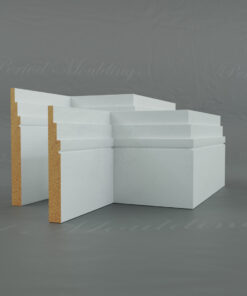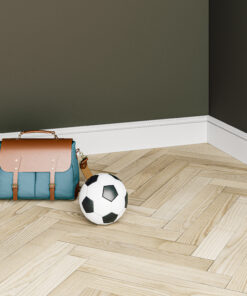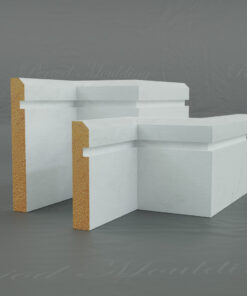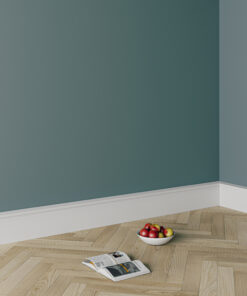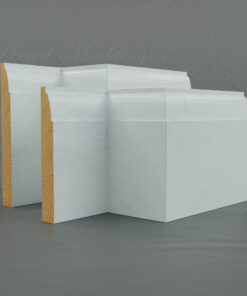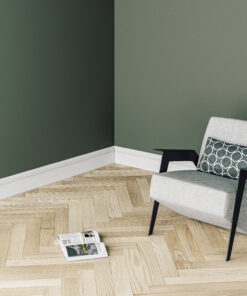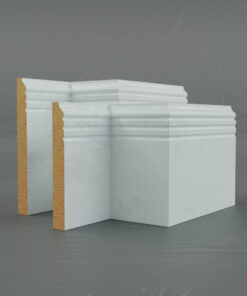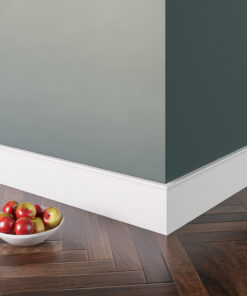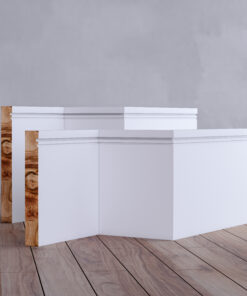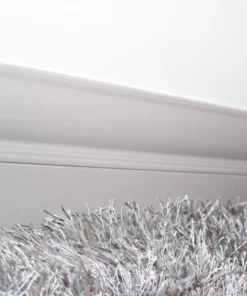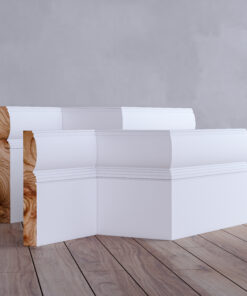Welcome to our buying guide skirting boards, created to help you select the right style, material, and finish for your home. Skirting boards are an architectural necessity—often overlooked but essential for both protection and design. In this skirting board buying guide, you’ll learn how to choose wisely and avoid costly mistakes that can affect the look of your interior.
Contents
- What is the purpose of a skirting board?
- The different factors to consider when choosing your skirting boards
- What style of skirting is right for you?
- Choose your colour design carefully
- Materials need to suit the nature of your home
- Think about how you want to finish the skirting board
- Combining practicality, budgets and aesthetics
What is the Purpose of a Skirting Board? (Buying Guide Skirting Boards)
When considering skirting boards, our buying guide skirting boards explains their real purpose and value in every home. These features go far beyond decoration—they protect your walls, hide uneven edges, and create a polished finish. Traditionally, a skirting board was fitted to hide the junction between the floor and a plastered wall. This often developed cracks or rough edges, and the skirting board was a neat way to cover this up. It also helps to cover rough carpet ends in the same manner.
As a functional feature, a skirting board also acts to prevent the spread of drafts that can come through cracks in the bottom of a wall, and can also hide wires for electrical equipment. Essentially, however, a skirting board’s main purpose in a home now, is to provide a barrier to protect your wall and to take the brunt of daily activity in the house involving the kids, pets, vacuum cleaners and general traffic. A skirting board also provides an aesthetic completeness, and while some modern homes may not need them in terms of functionality, it sometimes looks odd when they are not there.
Georgian Skirting Boards
Exclusively From Period Mouldings
The different factors to consider when choosing your skirting boards
It is true that there are more influential features in the home in terms of getting the style of your internal design wrong, but skirting boards are definitely a factor in combining a number of features successfully, and they frequently act as a conduit to blending colour and style themes between rooms, to ensure the home is consistent and pleasing-on-the-eye.
Factors that you need to consider, therefore, are the style of the skirting board, the colours you choose, the material you opt for and the finish on the skirting board. All these combine to provide the perfect decorative completion to a room or a series of rooms, and therefore, it is important that you consider them all together and not in isolation.
What style of skirting is right for you?
There are some distinctive and quite unusual skirting board styles that are used in contemporary homes, such as recessed skirting and shadow gaps. These require considerable pre-planning, even when building the home, and therefore aren’t really conducive with the kind of discussion we are holding here, i.e. when looking at renovating a property or carrying out some basic home improvements. Therefore, we are faced with a straight choice between contemporary skirting boards and period skirting boards.
In modern homes, a contemporary skirting board – plain and minimalist – works well, but period skirting can also fit if complemented by the right colours and furniture. However, a contemporary skirting doesn’t suit period homes with dado rails or architrave. The key is balance: Georgian and Victorian homes often have tall, airy rooms, while Edwardian and modern homes have smaller spaces. Ensure your skirtings match the room size—high skirtings can overwhelm a short room, and short skirtings can look out of place in a tall room.
Whatever period of traditional or contemporary skirting you opt for, you need to be consistent in your choice. You are unlikely to get away with mixing and matching periods in different rooms, or in adjacent corridors, and definitely not in the same room. In this sense, you need to consider architrave, coving and dado rails too. Different period skirting can be very distinctive in terms of the curves, ridges and mouldings, so it is very difficult, and certainly not recommended, to put two styles together.
Victorian Skirting Boards
Exclusively From Period Mouldings
Choose your colour design carefully
Colour schemes play a big role in creating the right room or blending multiple rooms and corridors. Skirting boards and architrave can create contrast or subtle variation, depending on your home style and furniture.
Many people choose white walls with coloured skirtings. Any colour works as long as it complements the room and creates a pleasing look. Coloured skirtings against white walls frame a room well and allow for plenty of wall decoration. White skirtings with coloured walls also work but are easier to get wrong. White skirtings will draw attention, so they need a good finish.
You can tone down contrast by choosing more subtle variations, like light grey skirting with darker grey walls, or vice versa. The alternative is to have walls and skirting in the same colour. This contemporary option makes a strong statement and can make a room feel more spacious.
Materials need to suit the nature of your home
The material you choose for your skirting boards is important. It affects how they look, how easy they are to fit, and how long they last. MDF is common in modern homes, but it can’t be machined or formed like natural wood. It works for contemporary skirting, but not for period styles.
MDF is affordable, making it a good option for those on a budget. However, it can warp, chip, and crack, requiring replacement. Explore our range of skirting boards to find durable alternatives made from high-quality timber. If you’re renovating or investing in home improvements, it’s worth considering the benefits of natural wood.
Wooden skirtings like oak, pine, tulipwood, or sapele are durable and versatile. They’re easy to machine and can be finished in various ways—sanded, oiled, varnished, or painted. The natural look of hardwood or softwood is unmatched, something MDF can’t replicate.
Edwardian Skirting Boards
Exclusively From Period Mouldings
Think about how you want to finish the skirting board
You can finish your skirting boards in several ways, depending on the materials and room style. Leaving natural wood exposed might not be the best option. It can appear raw and is vulnerable to damage and moisture. You can enhance the natural look with oils or varnish, adding both appeal and durability. Most natural woods can be easily sanded, and the surface will accept various finishes, including paint.
MDF, on the other hand, can be painted but doesn’t replicate the look of natural wood. It can’t be sanded for varnish, as it will become rough and unworkable. MDF is best for contemporary skirtings that are painted, offering a smooth finish that’s easy to apply.
For natural wood skirting, you can choose a gloss finish for a lustrous look, or a matte or satin finish for a more subtle appearance. Natural wood skirting gives you more flexibility for design and how you want the room to feel.
Combining practicality, budgets and aesthetics
In summary, when choosing your skirting boards you need to consider practical materials to reflect the nature and function of your rooms, you need to consider longevity and how often you want to replace your skirtings, and you need to consider how they look adjacent to other features of the home. It is quite straightforward to swap skirting board styles like-for-like, but this doesn’t mean you can’t change the style, even from one period to another. You just need to consider other features such as architrave and dado rails, and hence, invest in a complete makeover.
Perhaps the most important factor is consistency, because this ties practicality, longevity and aesthetics together. Skirtings help rooms flow from one to another, and in corridors acts as an important means of using interior design detail to make a house work. So don’t underestimate the importance of skirting boards, and always refer to our buying guide skirting boards when planning your next renovation. With the right materials and finish, you can transform your home’s style and durability. You might be of the opinion that skirting boards are an inconsequential item in the home, but get them wrong and you will quickly revise that opinion.
Contemporary Skirting Boards
Exclusively From Period Mouldings


